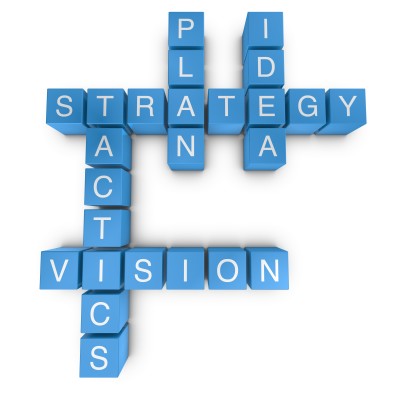You have to have a good strategic sales plan to get anywhere
Success in sales management starts with planning. As a leader, you want to develop a plan that provides your sales team with the strategy and tactics to lead them to success. I recommend following these five key components to developing a successful sales plan.
I. Define your ideal customers.
The first step, in your sales plan, is to formulate a strategy for acquiring new clients and maintaining your existing ones. What does your ideal client look like? The best way to determine this is to look at your current clients and study them. Who are your high margin clients? What industry are they in? If the majority is in the same type of business, maybe you should target that industry. How was the lead developed? What was the sales cycle? How did they pay? Answering these questions can help you find your ideal customer. Just as important as finding your ideal customer is identifying the types of customers you don’t want. Which of your current customers represent the low margin business? Who has the highest cancellation rate? Which are the slow pays? Develop a list of the good and the bad and look at targeting those that represent the best in your market and developing a sales plan strategy to get them.
II. Know your USP.
Your strategic plan should describe not just your products and services, but your unique selling proposition. Your USP is the thing that sets you apart from your competition. Your company may offer the same set of products and services as your competitor, so why should customers choose you? The answer should be more than you have the lowest price. Make sure you understand your USP and if you aren’t sure what it is, ask around.
III. Analyze your territory.
What’s the market or territory your sales efforts will cover? In your sales plan, you should define your market geographically to start with. If your company services the Chicago market, that would make up your geographic territory. But you don’t sell to everyone in the Chicago market do you? If you determined in step one that your best customers were property management companies, then that’s the segment of the market you’re interested in. How big is this market? Is it growing or shrinking? What other market segments look like the property management segment? Could you attack those as well? How many of those ideal customers are in your market? If there aren’t enough to reach your target, you’ll need to look at additional factors to make up the difference.
IV. Who is your competition?
In your sales plan, it is extremely important that you know and understand your competition. Unless you have a market all to yourself, understanding how the competition operates and functions is key to your success and the success of each of your salespeople. One owner/manager I worked with told me he knew everything about the competition, but when I asked if he had documented it, he said no. When I asked him how he trained his salespeople to deal with the competition, he stared at me like it was something he had never considered. Write it down. Share it. Every major organization I have worked with had write-ups on various competitors and made sure each of the salespeople knew who they were, what they sold, how much they sold it for – and most importantly, why customers would be better served by their company than the competition.
V. Sales Expectations.
Most of this information should be in your business plan. If not, you should develop a forecast of your sales and expenses by month, quarter and year. Do this for your entire team and each of your territories. Include in this forecast sales headcount, units sold, revenue and anticipated margin. It’s important to remember that sales expectations, just like the rest of your strategic sales plan, is a dynamic document you’ll constantly revisit and adjust as you go forward. When you prepare your sales expectations, be realistic. Don’t make the sales targets unreachable, but don’t make them so low that when you reach the target, you find you’re out of business.
Your sales plan and your sales strategy is an exceedingly important document that deserves lots of time and energy to develop. I started to say “to complete,” but it’s never complete. It should be adjusted as your company evolves, new products or services are introduced or the market changes. The key is to get input from all the stakeholders, including your customers, key employees from various departments in your organization, market data and your salespeople.
So, to develop your strategic sales plan, make sure to: 1) Define your ideal customer, 2) Develop your USP, 3) Analyze your territory design, 4) Know your competition, and 5) Have solid sales expectations.
Ask your questions or share your feedback:
- Comment on the this post
- Subscribe to our Newsletter To receive additional information
- Email @SalesManagementWorkshop.com
Let’s connect:
- If you have a chance, please leave me an honest rating and review in iTunes. It will help the show and its ranking. I appreciate it !!!! Thanks and I hope you enjoyed the show!
- Join the Facebook Page
- Follow @mcsalesworkshop
Related podcast:
SMW 002 Developing your strategic sales plan – Part One
SMW 003 Developing your strategic sales plan – Part Two
